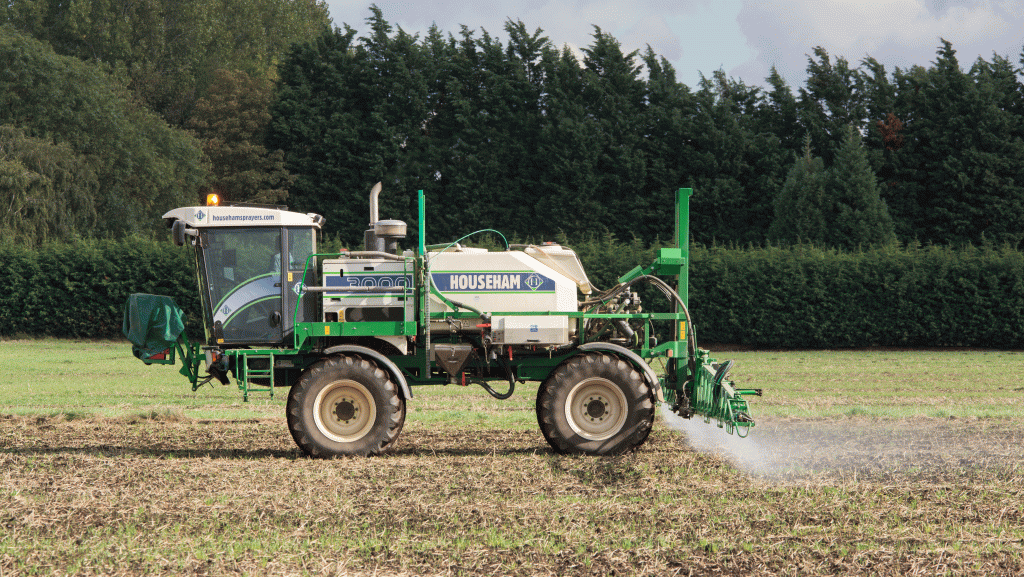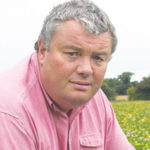Crop Watch: Oilseed rape under “terminator-like” pest attack
 © Tim Scrivener
© Tim Scrivener The continued pest pressure on oilseed rape is the key topic for our agronomists this week.
Oilseed rape is still under attack with Sean Sparling describing a “terminator-like” determination by cabbage stem flea beetle and slugs on any new growth.
Stephen Harrison adds that this autumn is the first time he has lost a field to flea beetle in his area, as the pest marches west into his patch.
On a positive note, recent rain has encouraged blackgrass emergence for Iain Richards and conditions have also helped clethodim take out grassweeds in oilseed rape for Andy Goulding.
See also: Spud Watch: Monitor crops for costly bruising risk
West: Stephen Harrison
AICC (Avon) 
After the ups and downs of harvest 2016 we look ahead to the future of the crops we are now establishing and wonder what the future holds. My crystal ball is rather murky with economic prospects being very unclear.
Difficulties such as resistant weeds seem to be in the sharpest focus. On the positive side there is always a frisson of excitement as the new crop goes into the ground and we prepare to see it through to harvest.
Oilseed rape has, on the whole, established well. Unfortunately, cabbage stem flea beetle continues its inexorable march west.
For the first time we have lost a whole field. Damage seems worse where thin soils meant trash could not be thoroughly mixed, seed to soil contact was poor and emergence slow. For the rest of the crop the picture is much rosier with strong, well-rooted plants.
The warm temperatures and moist soils have resulted in very good grassweed control from Centurion Max (clethodim).
Winter barley drilling is well underway. There is always a compromise between the ideal sowing date of late September for optimum yield and October for best blackgrass control. The worst fields will receive tri-allate and flufenacet/flupysulfuron.
A little winter wheat has been drilled on the most difficult ground. I suspect with a settled week forecast it will be difficult to hold back on the remaining area.
Soil conditions are good so at least we will be able to prepare some good seed-beds for the pre-emergence sprays.
There is a great need to hold off second wheat drilling, as soil temperatures are ideal for the take-all fungus to flourish. Mid October, even with Latitude (silthiofam) seed dressing, is the preferred option.
North: Andy Goulding
Hutchinsons (Cheshire and north Wales) 
Cereal drilling of all species is now in full swing and, for fields yet to be sown, remember that the key to seed rate is the target number of plants as a spring population – not seed weight for a given area.
Seed dressings containing clothianidin insecticide are a good establishment aid with activity against slug hollowing and wireworm, but those who have opted not to have the dressing will also be leaving themselves open to barley yellow dwarf virus.
Applications will need to be planned as aphid arrival can begin from the moment the crop is out of the ground, and this is when yield is most severely affected.
Oilseed rape has established well, but slug activity will have increased after the bouts of rain received last week, putting late drilled crops at risk. Herbicide programmes should now be coming to a close (except for the pockets of blackgrass, where holding out for optimum residual efficacy is needed).
Forage harvesters are droning away, with the maize harvest picking up speed. Yields and visual crop quality seem to be good at this stage. These earlier crops should allow a better opportunity for following crops to go into good seed-beds in comparison to last year.
On sites with a run-off risk, where crops aren’t to be sown, an effort should at least be made to mitigate the risk. This can be done by cultivating the soil lightly to allow water infiltration over winter.
East: Sean Sparling
AICC (Lincolnshire) 
The current warm wet weather has done little to dissuade the slugs and cabbage stem flea beetle from their onslaught. Even with oilseed rape crops at growth stage 6TL both are still managing to attack the new growth with “terminator-like” determination.
Pyrethroids applied late at night or early in the morning seem to be doing most good on flea beetle, but at best we’re getting suppression rather than control – so far that seems to be good enough.
OSR disease levels still remain very low, but I can’t help thinking that with the prevailing warm wet conditions it’s only a matter of time before something suddenly gives. Constant and regular monitoring is the only way when it comes to oilseed rape diseases and timing, as ever, is the key.
So if and when more than 10% of plants show evidence of phoma, a suitable fungicide will need to be applied. If the threshold is not reached, a fungicide with both phoma and light leaf spot activity should be applied in early November.
Staying with the pest theme – aphids are suddenly worryingly widespread. Where a “deter” seed dressing has been used this isn’t a big concern at present, but it doesn’t bode well for the rest of the season or indeed those who have not used “deter”.
What we could really do with is some sort of in-field ELISA test so we can check and see if the aphids in the crop have knockdown resistance to pyrethroids (kdr) or if they are actually carrying virus in the first place. Because with the levels of kdr in the aphid population, it would be good to know:
- that we are using what’s left of our rapidly diminishing aphicide armoury wisely
- and that we are actually likely to be doing some good by spraying.
Twenty years ago, it was predicted that such tests were going to be the norm by now – wonder what happened there then?
South: Iain Richards
Agrii (Hampshire) 
Unlike the eastern counties, we’re growing much the same area of winter rape as last season. In most cases, the rape harvest was disappointing, but by no means disastrous.
And our only realistic rotational alternative was more pulses, which proved equally disappointing through the combine.
So with rapeseed prices showing an encouraging upturn in marked contrast to pulse returns, our decision wasn’t difficult; especially with no history of serious flea beetle problems.
Flea beetle has, however, proved much more of a challenge in Oxfordshire this time around, coming in at the expanded cotyledon stage and requiring up to three pyrethroid sprays to hold at bay.
Thankfully, it has continued to be far less threatening in Hampshire. Even so, the pest has held back crops here on the lighter chalky soils where moisture is more limiting.
We held off rape drilling for as long as we dared in August, only starting on the 22 once some useful rain was in prospect. This allowed our crops to get off to a generally good early September start, with just enough moisture since to keep them going well on all but our lightest ground.
Our best, most even rape establishment has again come from drilled rather than subsoiler-sown crops, courtesy of a more consistent sowing depth and better seed-to-soil contact. Removing cereal straw has noticeably improved establishment, too, as well as making our early slug control challenge more manageable.
We’ve seen a lot of leaf miner activity in the rape this season. At the same time, downy mildew has also been an issue in some cases. Neither of these would be a problem on their own, but alongside the flea beetles and slugs, they’ve been responsible for some fairly substantial variations in crop development between and within fields.
Some have just had their Centurion Max, although for most this is still a week away as blackgrass has been so slow to come through. The last thing we want is to have to go in with our propyzamide before both the crops and the conditions are right.
Having said that, blackgrass emergence really seems to have hotted up in the past 10 days as moisture levels have improved. Just in time for us to spray off a good flush ahead of our winter barley drilling.

